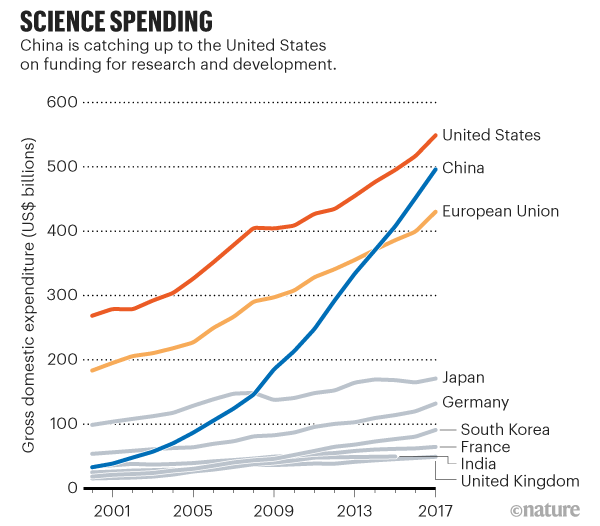https://www.nytimes.com/2020/02/03/opinion/republican-party-trump.html
Is this the week American democracy dies? Quite possibly.
After all, everyone in Washington understands perfectly well that Donald Trump abused the powers of his office in an attempt to rig this year's presidential election. But Senate Republicans are nonetheless about to acquit him without even pretending to look at the evidence, thereby encouraging further abuses of power.
But how did we get to this point? Part of the answer is extreme partisanship and right-wing political correctness (which is far more virulent than anything on the left). But I also blame the zombies.
A zombie idea is a belief or doctrine that has repeatedly been proved false, but refuses to die; instead, it just keeps shambling along, eating people's brains. The ultimate zombie in American politics is the assertion that tax cuts pay for themselves — a claim that has been proved wrong again and again over the past 40 years. But there are other zombies, like climate change denial, that play an almost equally large role in our political discourse.
ADVERTISEMENT
Continue reading the main story
And all of the really important zombies these days are on the right. Indeed, they have taken over the Republican Party.
It was not always thus. Back in 1980 George H.W. Bush called Ronald Reagan's extravagant claims about the effectiveness of tax cuts "voodoo economic policy." Everything that has happened since has vindicated his original assessment. Deficits ballooned after Reagan cut taxes; they shrank and eventually turned into surpluses after Bill Clinton raised taxes, then ballooned again after George W. Bush's tax cuts.
Voodoo has also crashed and burned at the state level: The Kansas experiment in radical tax cuts was a dismal failure, while California's tax hike under Jerry Brown, which conservatives declared a case of "economic suicide," was followed by a revenue and economic boom.
Yet voodoo economics has become unchallengeable doctrine within the Republican Party. Even fake moderates like Susan Collins justified their support for the 2017 Trump tax cut by claiming that it would reduce the budget deficit. Predictably, the deficit actually exploded, and now exceeds $1 trillion a year.
The politics of climate change have followed a similar trajectory. Global temperature keeps setting records, while climate-related catastrophes like the Australian wildfires are proliferating. Yet a majority of Republicans in Congress are climate deniers — many of them buying into the notion that climate change is a hoax perpetrated by a vast international scientific conspiracy — and even those, like Marco Rubio, who grudgingly admit that global warming is real oppose any significant action to limit emissions.
It's important to realize that the zombification of the G.O.P. isn't a recent phenomenon, something that happened only with Trump's election. On the contrary, zombies have been eating Republican brains for decades. Voodoo economics had completely taken over the party by the early 2000s, when then-House majority leader Tom DeLay declared, "Nothing is more important in the face of war than cutting taxes." Climate deniers have ruled since at least 2009, when only eight House Republicans supported a bill to limit greenhouse gas emissions.
What recent events make clear, however, is that zombie ideas haven't eaten just Republicans' brains. They have also eaten the party's soul.
Think about what is now required for a Republican politician to be considered a party member in good standing. He or she must pledge allegiance to policy doctrines that are demonstrably false; he or she must, in effect, reject the very idea of paying attention to evidence.
It takes a certain kind of person to play that kind of game — namely, a cynical careerist. There used to be Republican politicians who were more than that, but they were mainly holdovers from an earlier era, and at this point have all left the scene, one way or another. John McCain may well have been the last of his kind.
What's left now is a party that, as far as I can tell, contains no politicians of principle; anyone who does have principles has been driven out.
Now, the news media, with its constant urge to seem "balanced," has a hard time coping with this reality; it's always looking for ways to portray at least some Republicans as admirable figures. This has made it easy prey for charlatans like Paul Ryan, who pretended to be serious about his fiscal principles. But he was always an obvious flimflam man.
Anyway, a result of decades of zombification is a Republican caucus that consists entirely of soulless opportunists (and no, the fact that some of them like to quote Scripture doesn't change that fact).
I guess you might have hoped that there would be some limits to what these apparatchiks would accept, that even they would draw the line at gross abuses of power and collusion with foreign autocrats. What we've learned, however — and perhaps more important, what Trump has learned — is that there is no line. If Trump wants to dismantle democracy and rule of law (which he does), his party will stand with him all the way.
The Times is committed to publishing a diversity of letters to the editor. We'd like to hear what you think about this or any of our articles. Here are some tips. And here's our email: letters@nytimes.com.
Follow The New York Times Opinion section on Facebook, Twitter (@NYTopinion) and Instagram.
Paul Krugman has been an Opinion columnist since 2000 and is also a Distinguished Professor at the City University of New York Graduate Center. He won the 2008 Nobel Memorial Prize in Economic Sciences for his work on international trade and economic geography.
-- via my feedly newsfeed




